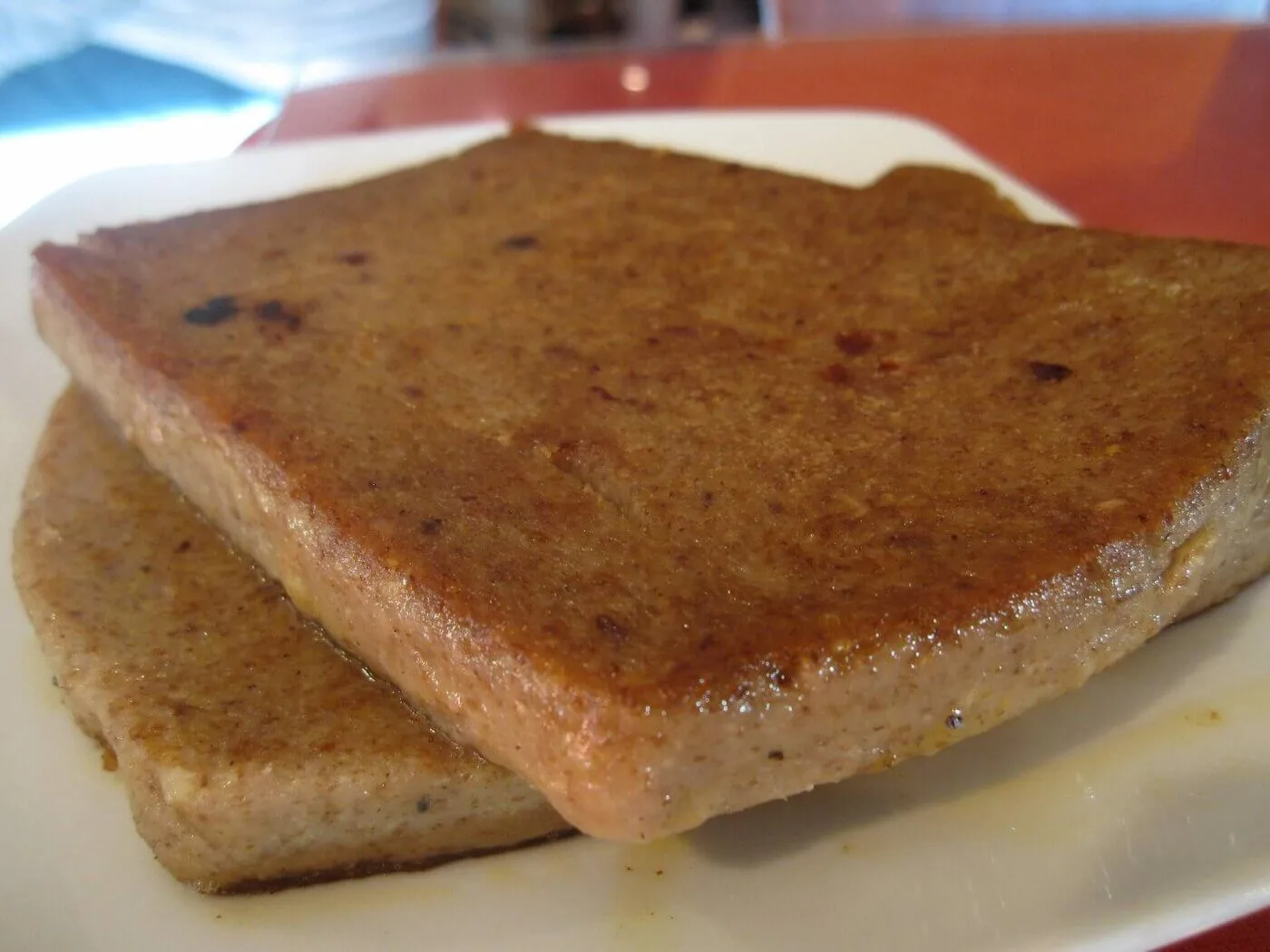
Scrapple (Photo credit: Kate Hopkins)
In honor of National Scrapple Day, here are five fun facts about the Pennsylvania-popular delicacy made from every part of the pig except the oink.
As local specialties go, it’s hard to top scrapple in the weird department. Even those who love the gray jelly-like cube joke that it’s made from every part of the pig except the oink. But Pennsylvanians love eating it probably more than any other region in the US.
With National Scrapple Day coming up on Thursday, here are five fun facts about the popular breakfast meat:
Scrapple’s roots go way back
Scrapple originated from pre-Roman Europe and later from Germany with a dish known as ‘panhas’ in German, which was traditionally made with rabbit. When the Pennsylvania Dutch settlers brought the culinary tradition to Pennsylvania, the recipe was adapted to use pork, which was more readily available in the region. Early German settlers in the Philadelphia region created the first American scrapple recipes during the 17th and 18th centuries.
Scrapple didn’t get its name because it’s made with scraps
While traditionally the method of cooking scrapple was used to avoid wasting scraps of meat that were leftover after butchering, that’s not where the delicacy got its name. The name “scrapple” most likely originated as a shortened version of panhaskröppel, which stems from words panhaas or panaas (“pan rabbit”) and skröppel (”a slice of”). Translated, panhaskröppel is a slice of panhaas. Since that’s both gross and hard to pronounce, over time it was simplified to scrapple.
Scrapple became available commercially in 1863
Originally located in Media, Habbersett Pork Products first started selling scrapple to the masses in 1863, and you can still get that same product — with some minor recipe tweaks — in stores today.
If your scrapple is gray, you’re a-ok
A dull gray isn’t normally the most appetizing color you’d want in a meat product, but that’s the color a proper piece of scrapple should be. The buckwheat flour used in scrapple to help thicken the meat mixture and add flavor and nutritional value is responsible for the gray color.
You can thank scrapple for Labor Day (possibly)
Probably an urban legend, but the story goes that in 1879, a man named Rasher Liverburg, a union member at Philadelphia’s Panhas Packers, proposed a day in September where all the company’s workers get the day off to enjoy the scrapple they were producing. “Enjoy Your Scrapple Labor Day” soon became a yearly tradition at the plant. Eventually, the idea of a yearly day off of work spread, and Labor Day became an official US holiday in 1894.
Support Our Cause
Thank you for taking the time to read our work. Before you go, we hope you'll consider supporting our values-driven journalism, which has always strived to make clear what's really at stake for Pennsylvanians and our future.
Since day one, our goal here at The Keystone has always been to empower people across the commonwealth with fact-based news and information. We believe that when people are armed with knowledge about what's happening in their local, state, and federal governments—including who is working on their behalf and who is actively trying to block efforts aimed at improving the daily lives of Pennsylvania families—they will be inspired to become civically engaged.


For Rep. Susan Wild, supporting PA families includes reproductive rights and much more
Rep. Susan Wild wants to be very clear with Pennsylvanians: Donald Trump is committed to taking away women’s reproductive freedom, but he is not...

School districts working with anti-LGBTQ groups can cost your kids’ schools millions
Parents across South Central Pennsylvania are worried about the potential financial impacts working with anti-LGBTQ groups may have on their school...

VIDEO: Trump distances himself from his anti-abortion views
Donald Trump appeared on WGAL on Tuesday and continued to distance himself from his anti-abortion views claiming that reproductive rights are now a...

VIDEO: Community pushback gets school board to rescind decision on denying gay actor’s visit
Cumberland Valley School Board offered a public apology and voted to reinstate Maulik Pancholy as a guest speaker a week after the board voted to...

VIDEO: Project 2025 brings nuclear armageddon back into vogue
Project 2025 is a titanic document, with plans ranging from cutting half of all government employees to targeting reproductive rights on a scale...




